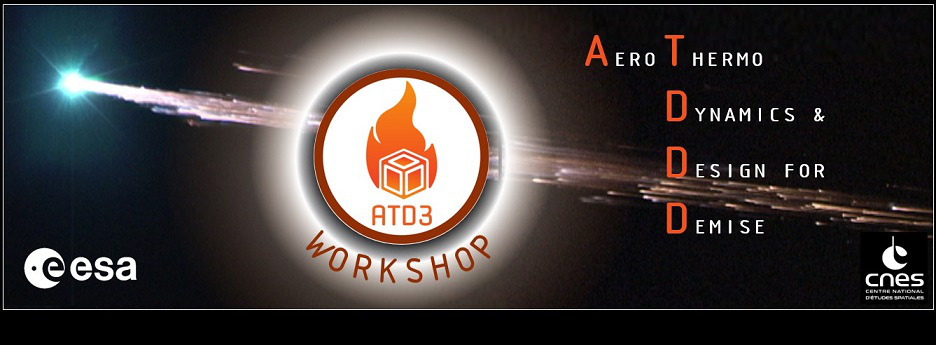Speaker
Description
Several D4D techniques are available to achieve a complete spacecraft (equipment) demise. The mass can be minimized or more demisable materials can be selected, the heat flux could be controlled by altering the ballistic coefficient and local geometry of objects or an early fragmentation of the spacecraft and its equipment could be facilitated. If some fragments survive, their impact on the casualty risk can be limited by keeping them together using the containment technique. Even using these techniques, we may not be able to design a sufficiently demisable spacecraft. So what can we do, when it appears that re-entry just isn’t hot enough?
We make it hotter! Using pyrotechnic compositions, e.g. thermite, an exothermic reaction can provide additional energy in order to facilitate demise. These ideas are described in ESA patent EP3604143A1 and CNES patent FR2975080A1. Compared to re-entry, exothermic reactions add a relatively small additional amount of energy. However, the energy can be released where and when it's necessary. This new D4D technique could be used in multiple ways:
• Providing extra energy to undemisable equipment.
• Severing the interface between the spacecraft and equipment.
• Fragmenting equipment in two or more parts.
• Severing secondary mechanical interfaces, e.g. harness, propulsion or heat pipes.
• Combination of several of the above, where for example the interfaces are severed, the equipment is fragmented and additional energy is added to the remaining fragments. This use case requires predetermined sequencing of events, e.g. by using fuses.
• Altering the aerodynamic properties of equipment, e.g. creating a hole in a propellant tank.
• Severing joints in the spacecraft to enable break up, e.g. by introducing energetic materials in the joint or in the spacecraft structural panels surrounding the joint/insert.
• Creating thermo-elastic stresses that lead to fracture or rupture, e.g. for ceramics.
A first effort to prove the concept has yielded mixed results. Thermite ignition in a plasma wind tunnel and release of a significant amount of energy was demonstrated. However, the impact on the demise of the test samples was limited for several reasons:
• Sub-optimal thermite composition
• Insufficient thermite for the test sample
• Issues with test predictions and correlation
• Sub-optimal test set-up, yielding a non-representative temperature distribution
• Complicated test sample
• Impact of the formation of slag
ESA activity ‘Spacecraft demise during re-entry using various exothermic reactions’ has just started to prove the concept, with these objectives:
• Design, optimization and proof of concept by simulation and test at breadboard level in a representative environment of the use of exothermic reactions for demise purposes. The desirability/viability of different use cases needs to be assessed.
• Design and verification of different fuse concepts to provide the energy needed for ignition at various temperatures.
• Devising design guidelines for use of the technology in various equipment.
If developed successfully, using exothermic reactions to facilitate demise could provide a paradigm shift, from trying to design all equipment for demise, to demising existing equipment with minor changes while leveraging existing heritage.

